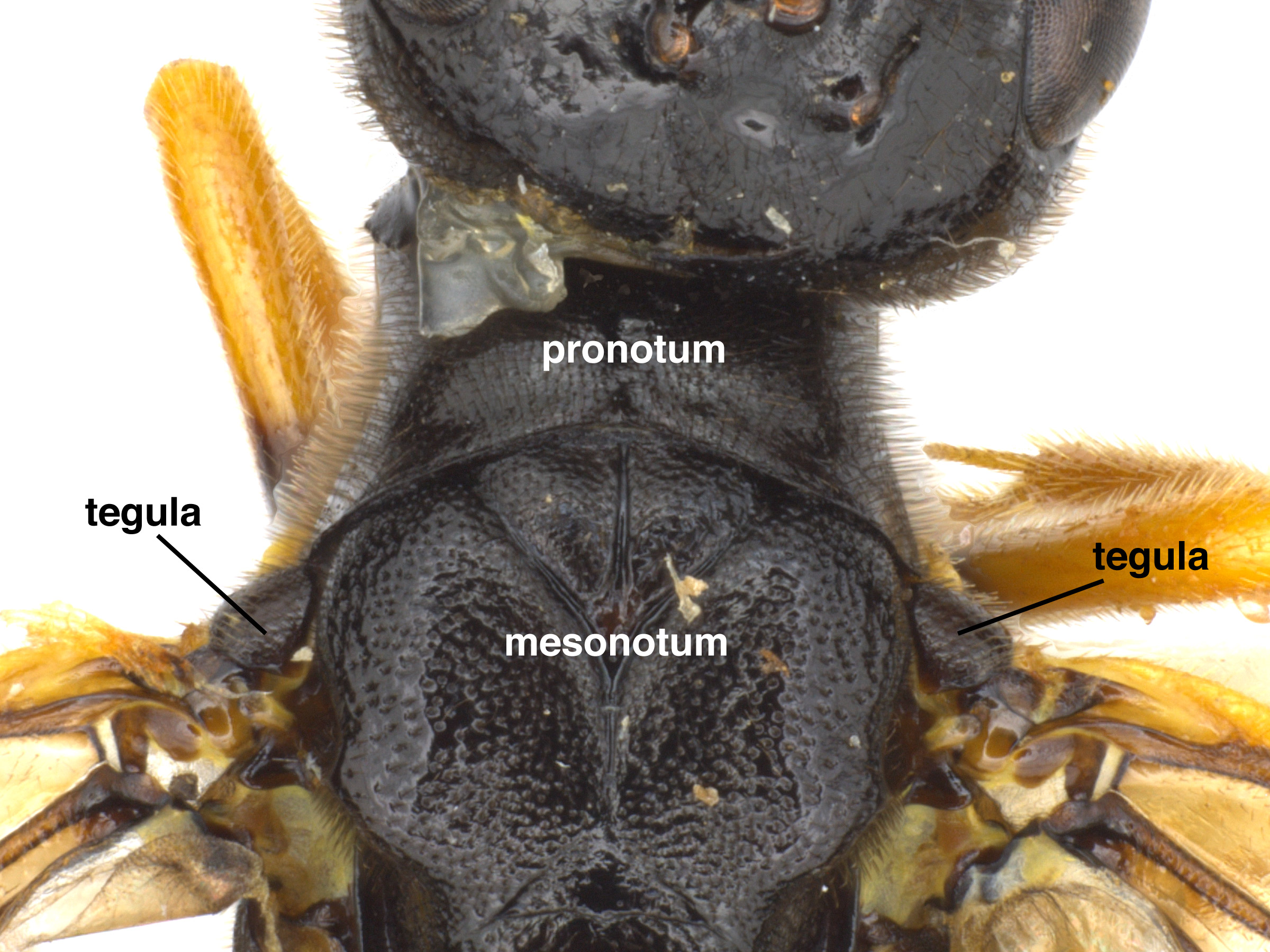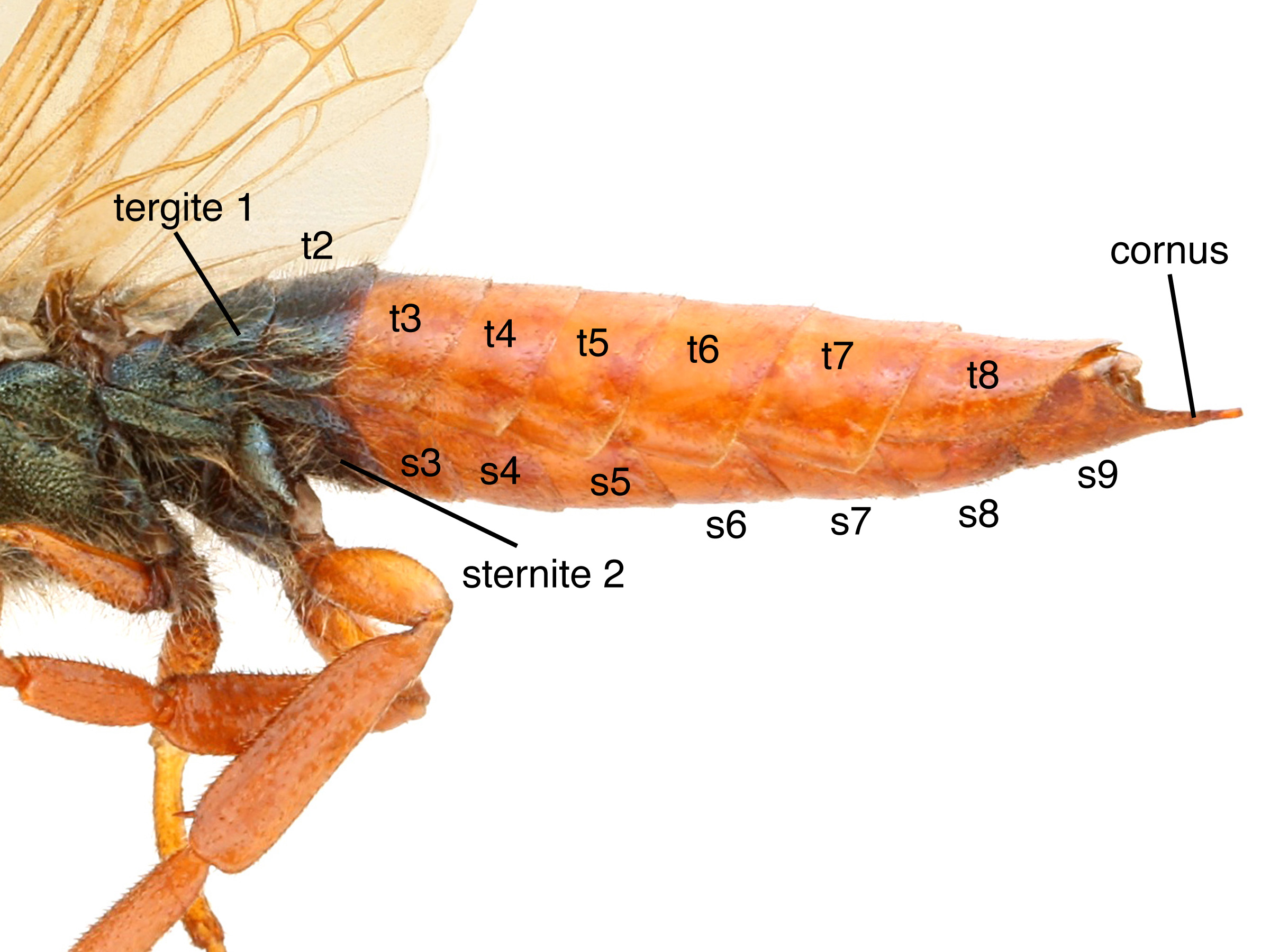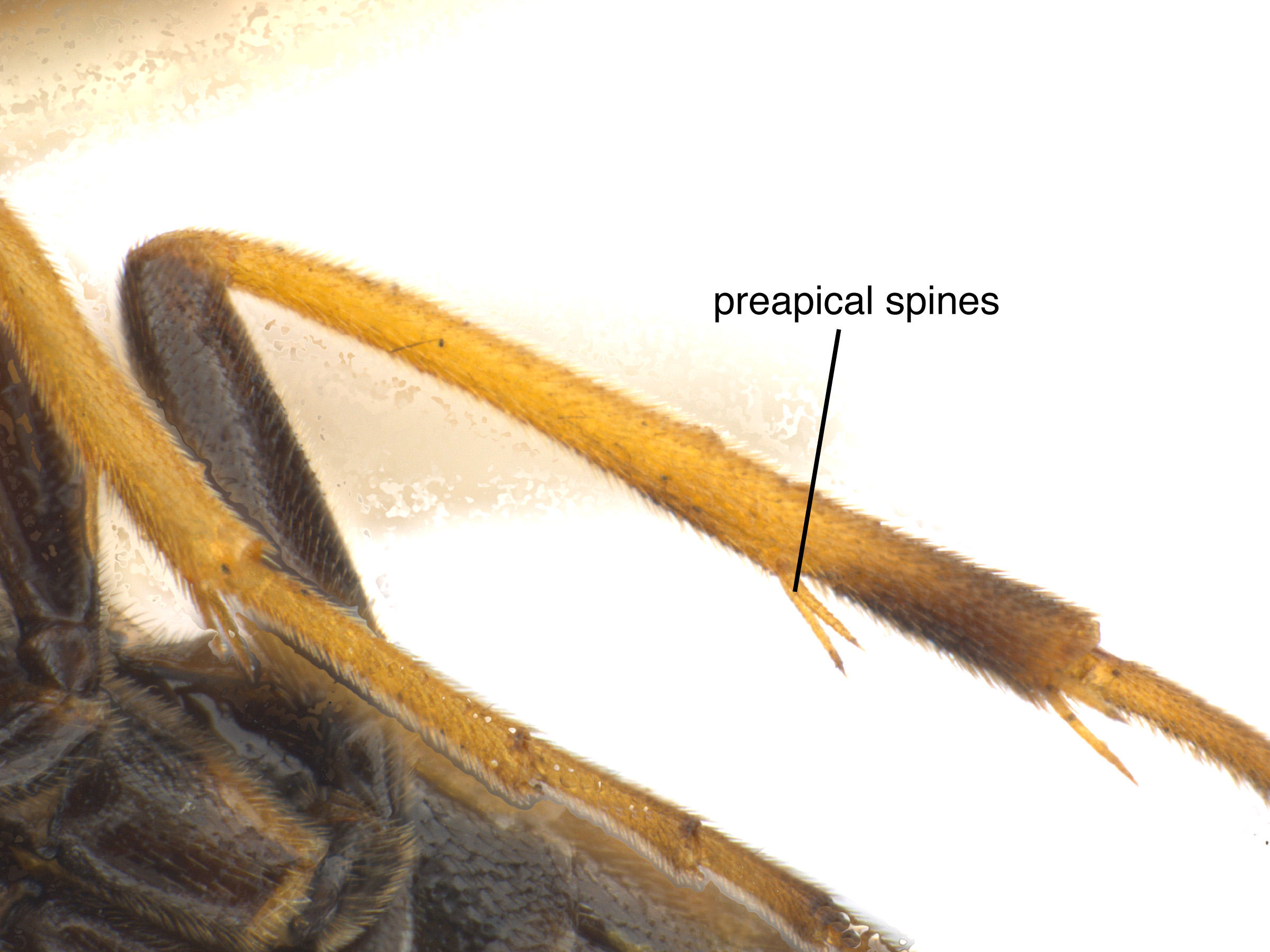Superfamily: Xyeloidea
Family: Xyelidae
Family common name: xyelid sawflies
Subfamilies: Archexyelinae, Macroxyelinae, Madygellinae, Xyelinae
The family Xyelidae are recognized by most phylogenies as the most primitive sawfly family (Ross 1932). The two subfamilies have two distinct host preferences, one for coniferousconiferous:
describing a conifer
and one for deciduousdeciduous:
describing a tree that drops its foliage once a year and then re-grows it; often senescence occurs before winter and re-growth occurs in the spring
trees (Smith and Middlekauff 1987Smith and Middlekauff 1987:
Smith DR and Middlekauff WW. 1987. Suborder Symphyta. In: Stehr FW ed. Immature Insects. Kendall/Hunt Publishing Company. Vol. 1: 754 pp.). The family can be easily recognized by the expanded first flagellomereflagellomere:
A segment of the flagellum of the antenna
 (Goulet 1992Goulet 1992:
(Goulet 1992Goulet 1992:
Goulet H. 1992. The genera and subgenera of the sawflies of Canada and Alaska: Hymenoptera. Symphyta. The insects and arachnids of Canada. Part 20. Agriculture Canada Publication.).
Xyelidae includes 52 genera and 158 species worldwide. About 5 genera and 38 species are NearcticNearctic:
describing the region of the Northern Hemisphere that includes North America south through northern Mexico
 in distribution (Taeger et al. 2018Taeger et al. 2018:
in distribution (Taeger et al. 2018Taeger et al. 2018:
Taeger A, Liston AD, Prous M, Groll EK, Gehroldt T, and Blank SM. 2018. ECatSymmdash;Electronic World Catalog of Symphyta (Insecta, Hymenoptera). Program version 5.0 (19 Dec 2018), data version 40 (23 Sep 2018). Senckenberg Deutsches Entomologisches Institut (SDEI), Muuml;ncheberg. https://sdei.de/ecatsym/ Accessed: 28 Jan 2020.).
Macroxyela
Megaxyela
Pleroneura
Xyela
Xyelecia
 evenly sloped; not extremely constricted medially (Goulet 1992Goulet 1992:
evenly sloped; not extremely constricted medially (Goulet 1992Goulet 1992: short ventrally (Goulet 1992Goulet 1992:
short ventrally (Goulet 1992Goulet 1992: divided medially (Goulet 1992Goulet 1992:
divided medially (Goulet 1992Goulet 1992: with 3–4 preapicalpreapical:
with 3–4 preapicalpreapical: spurs (Goulet 1992Goulet 1992:
spurs (Goulet 1992Goulet 1992: with 2 apicalapical:
with 2 apicalapical: not as wide as distance between compound eyes (Goulet 1992Goulet 1992:
not as wide as distance between compound eyes (Goulet 1992Goulet 1992: (Goulet 1992Goulet 1992:
(Goulet 1992Goulet 1992:In North America, Xyelidae feeds on coniferousconiferous:
describing a conifer
trees in the family Pinaceae, and on angiosperm trees in the families Ulmaceae and Juglandaceae (Smith and Middlekauff 1987Smith and Middlekauff 1987:
Smith DR and Middlekauff WW. 1987. Suborder Symphyta. In: Stehr FW ed. Immature Insects. Kendall/Hunt Publishing Company. Vol. 1: 754 pp.).
Xyelidae can be distinguished from other families by the wide and elongated third antennal segment (Goulet 1992Goulet 1992:
Goulet H. 1992. The genera and subgenera of the sawflies of Canada and Alaska: Hymenoptera. Symphyta. The insects and arachnids of Canada. Part 20. Agriculture Canada Publication.).
Many species of Xyelidae are external leaf feeders. Some others bore into developing cones, buds, and shoots. One species, X. gallicaulis, is a gall-former. All known species are univoltineunivoltine:
describing an insect with a life cycle of one generation per year
(Smith and Middlekauff 1987Smith and Middlekauff 1987:
Smith DR and Middlekauff WW. 1987. Suborder Symphyta. In: Stehr FW ed. Immature Insects. Kendall/Hunt Publishing Company. Vol. 1: 754 pp.).
World: This family’s range extends through North America, Europe, and Asia (Taeger et al. 2010Taeger et al. 2010:
Taeger A, Blank SM, and Liston AD. 2010. World Catalog of Symphyta (Hymenoptera). Zootaxa 2580: 1-1064.).
North America: Xyelidae occurs throughout the United States and Canada, and south into Mexico (Smith and Middlekauff 1987Smith and Middlekauff 1987:
Smith DR and Middlekauff WW. 1987. Suborder Symphyta. In: Stehr FW ed. Immature Insects. Kendall/Hunt Publishing Company. Vol. 1: 754 pp.).